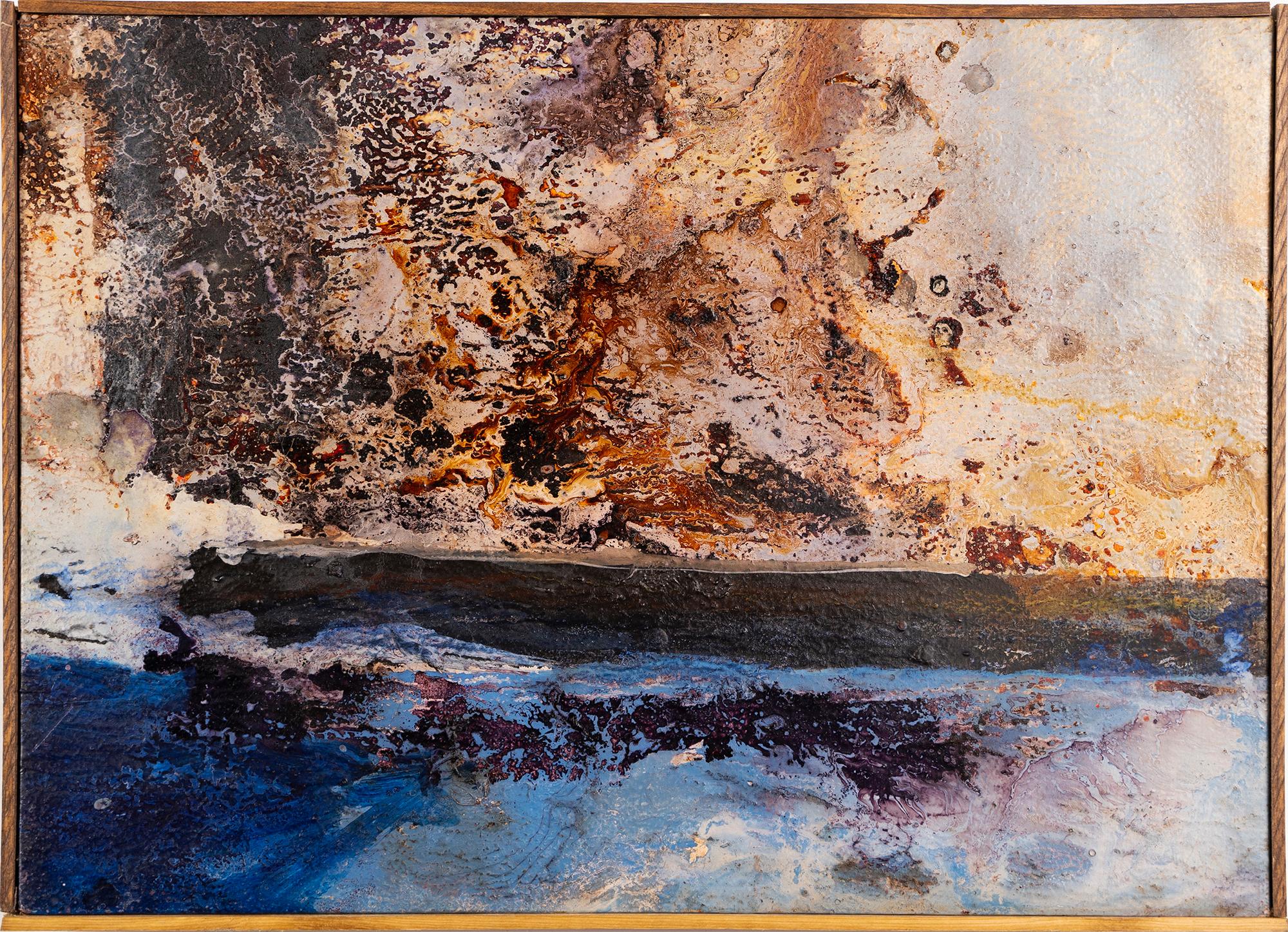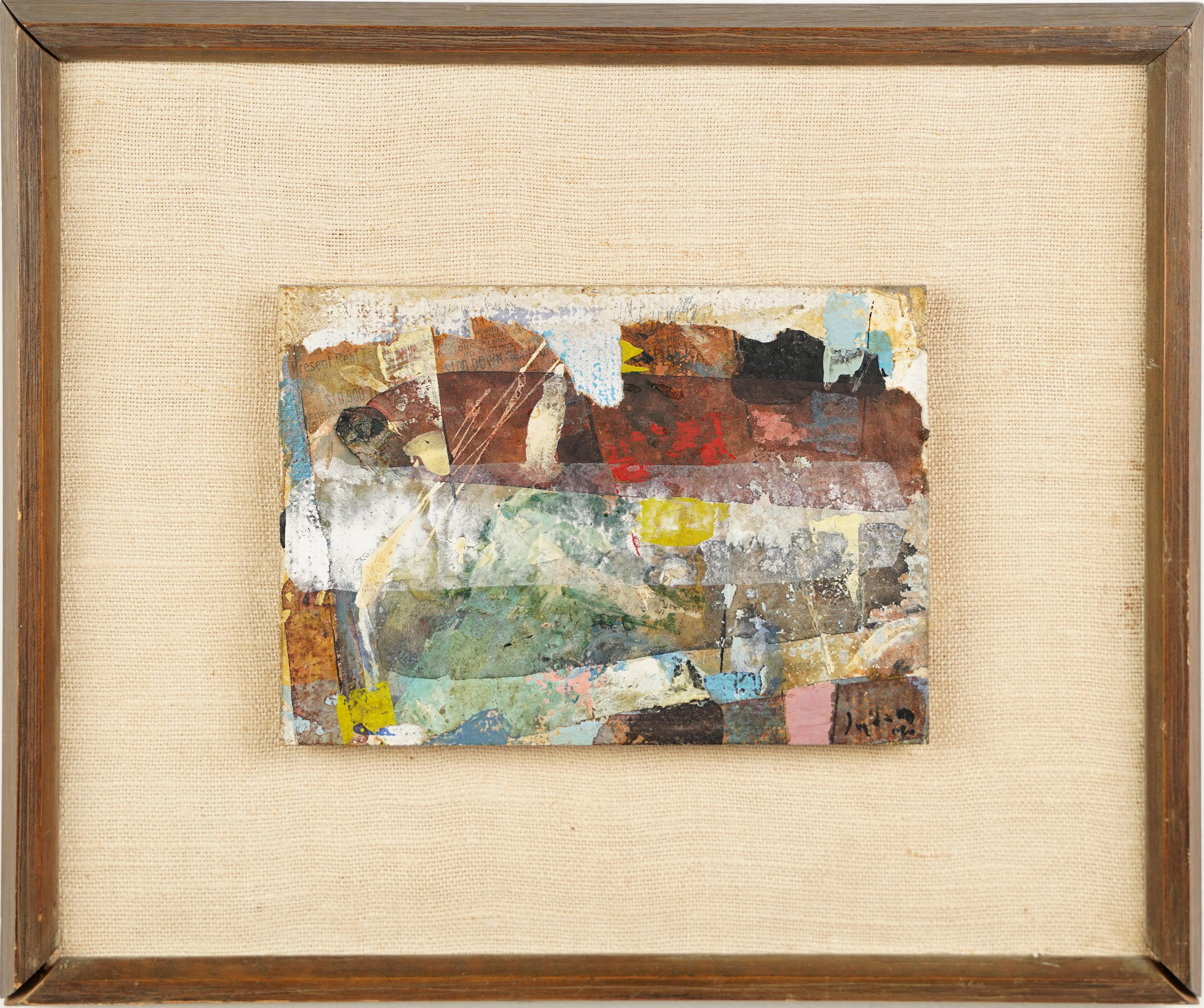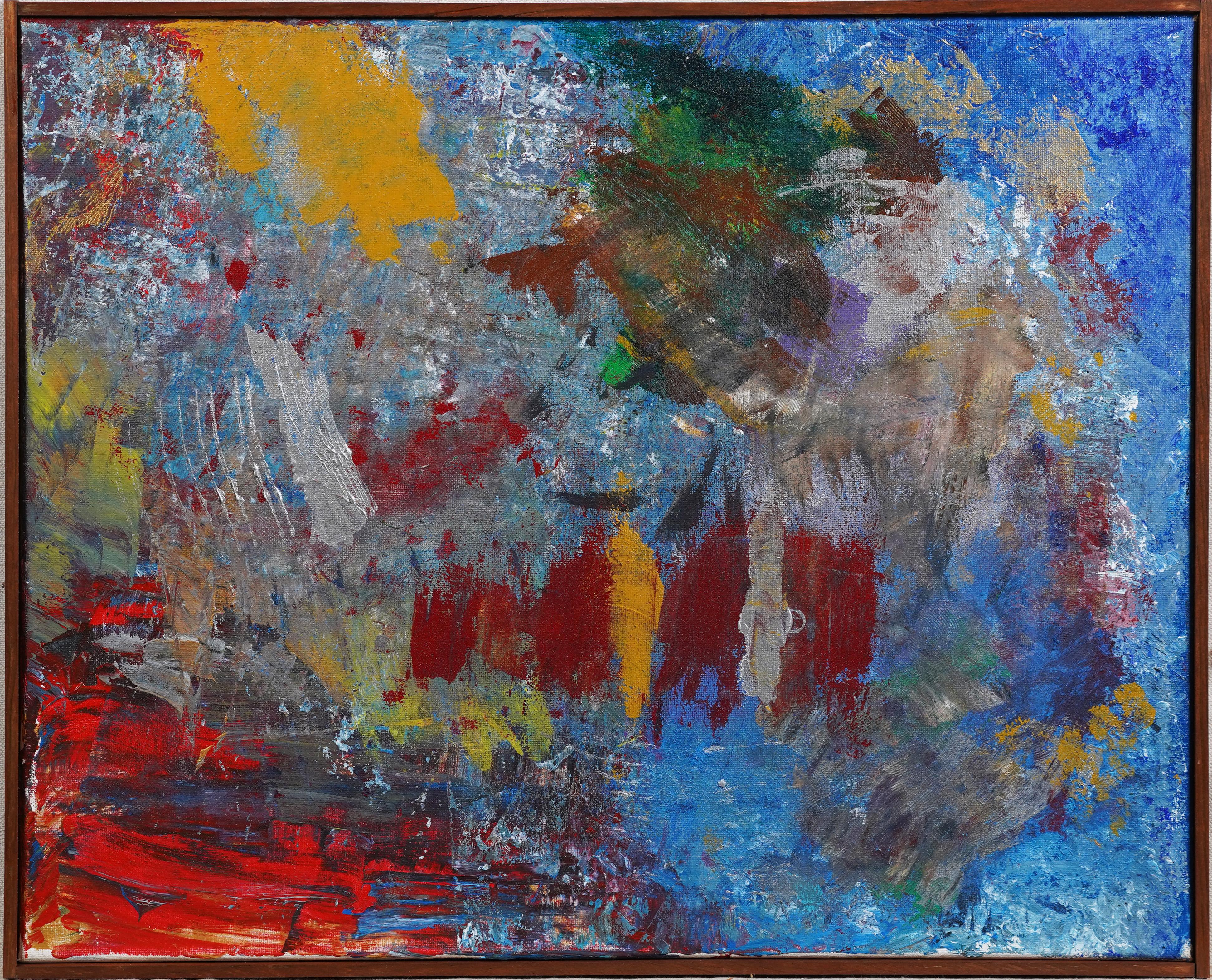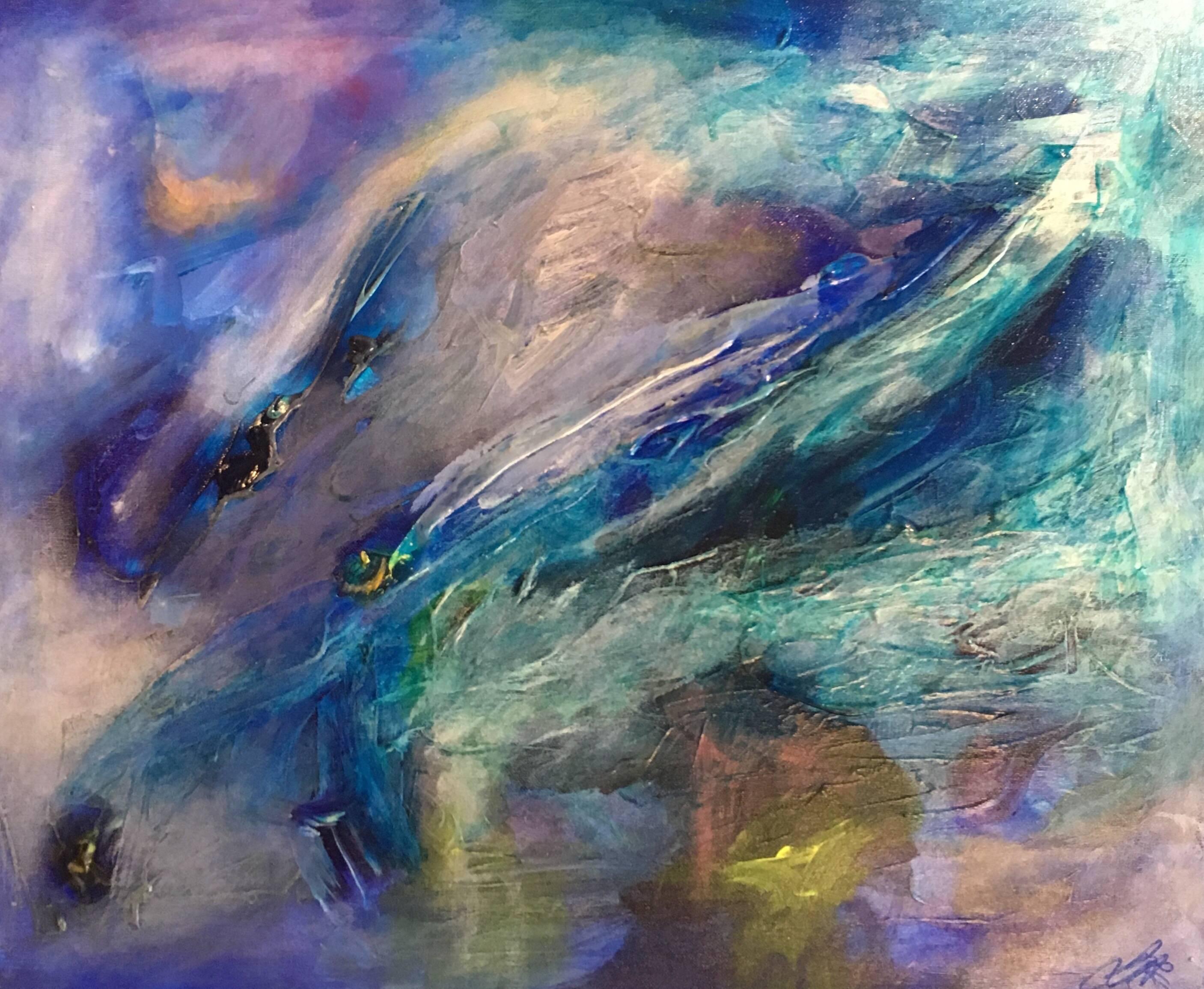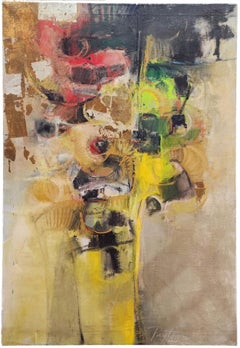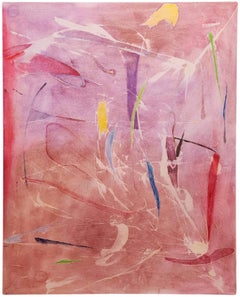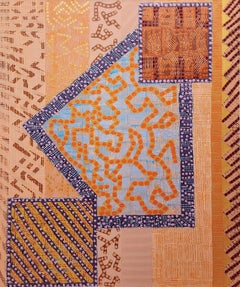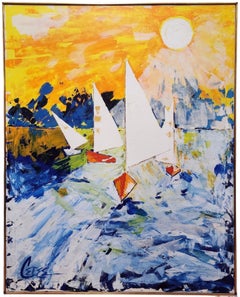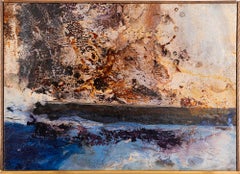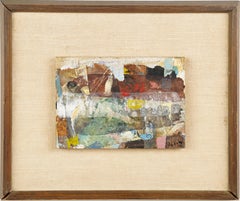Items Similar to Large 1960s Abstract Oil Painting
Want more images or videos?
Request additional images or videos from the seller
1 of 9
UnknownLarge 1960s Abstract Oil Painting1964
1964
$2,410
£1,821.09
€2,107.76
CA$3,381.11
A$3,760.77
CHF 1,972.89
MX$45,889.89
NOK 24,762.29
SEK 23,335.46
DKK 15,733.55
About the Item
Unknown Artist, signed on verso
Untitled, 1964
Oil on Masonite
32" x 48"
Housed in its original 1 1/2 Frame
Overall Size: 34 3/4 x 50 5/8"
Some scuffing/discoloration to frame. Painting appears to be in very good original condition.
Available for sale is a wonderful, large, vintage abstract painting. Unfortunately, we are unsure of who the artist is. For some, this piece may be reminiscent of the work of Zoa Wou-ki.
- Creation Year:1964
- Dimensions:Height: 34.75 in (88.27 cm)Width: 50.625 in (128.59 cm)
- Medium:
- Movement & Style:
- Period:
- Condition:
- Gallery Location:Grand Rapids, MI
- Reference Number:1stDibs: LU2380216635922
About the Seller
5.0
Platinum Seller
Premium sellers with a 4.7+ rating and 24-hour response times
Established in 2016
1stDibs seller since 2023
71 sales on 1stDibs
Typical response time: <1 hour
- ShippingRetrieving quote...Shipping from: Grand Rapids, MI
- Return Policy
Authenticity Guarantee
In the unlikely event there’s an issue with an item’s authenticity, contact us within 1 year for a full refund. DetailsMoney-Back Guarantee
If your item is not as described, is damaged in transit, or does not arrive, contact us within 7 days for a full refund. Details24-Hour Cancellation
You have a 24-hour grace period in which to reconsider your purchase, with no questions asked.Vetted Professional Sellers
Our world-class sellers must adhere to strict standards for service and quality, maintaining the integrity of our listings.Price-Match Guarantee
If you find that a seller listed the same item for a lower price elsewhere, we’ll match it.Trusted Global Delivery
Our best-in-class carrier network provides specialized shipping options worldwide, including custom delivery.More From This Seller
View AllLarge 1970s Abstract Oil on Canvas, Colorful Modern, Hawaii
Located in Grand Rapids, MI
Unknown artist, signed Payton 1970 Hawaii (Lower, Right)
Untitled, 1970
Oil on Canvas
50" x 34"
A wonderfully curious painting, whose untold history is something to marvel a...
Category
Mid-20th Century Abstract Abstract Paintings
Materials
Canvas, Oil
$1,750 Sale Price
30% Off
Large 1970s Abstract, Mid Century Modern, Oil on Canvas, MCM, Colorful, Vintage
Located in Grand Rapids, MI
Appears to be unsigned.
Untitled, circa 1970s
Oil on Canvas
50" x 40 1/4"
In very good original condition.
A nice, large, vintage abstract painting full of color.
Category
Mid-20th Century Abstract Abstract Paintings
Materials
Canvas, Oil
$1,110 Sale Price
40% Off
Divided By Time, Large Modern Abstract Painting
Located in Grand Rapids, MI
Robert Sealock (American, 20th Century)
Signed: RWS 93 (Canvas Verso)
" Divided By Time ", 1993
Oil on Canvas
48 1/4" x 40"
This large modern painting is in nice original condi...
Category
Late 20th Century American Modern Abstract Paintings
Materials
Canvas, Oil
Large 1970s Modern Sailing in Sunshine, Colorful Vintage, Abstract
Located in Grand Rapids, MI
" Sailing in Sunshine ", circa 1970s
Oil on Canvas
50" x 40"
Housed in a Slat-wood frame
Overall Size: 50 1/2" x 40 3/4"
Appears to be in very good condition.
We are looking f...
Category
Mid-20th Century Abstract Landscape Paintings
Materials
Canvas, Oil
$1,875 Sale Price
25% Off
After the Symphonic Poem, " Verklarte Nacht ", by Arnold Schoenberg
By Rolf Stoll
Located in Grand Rapids, MI
Rolf Stoll, (German/American, 1892-1978)
Signed: Rolf Stoll, (lower, left)
“ After the Symphonic Poem, " Verklarte Nacht ", by Arnold Schoenberg ", (titled on stretcher verso) Circ...
Category
Mid-20th Century Abstract Geometric Abstract Paintings
Materials
Canvas, Oil
$4,000 Sale Price
20% Off
Off Boulogne, French Harbor Scene, Chicago Artist, Large 1950s Abstract Oil
Located in Grand Rapids, MI
Alfred Cohen (American, 1920 - 2001)
Signed: A. Cohen (Lower, Right)
Stamped: Atelier Alfred Cohen (on Canvas Verso)
" Off Boulogne ", circa 1950s
Oi...
Category
Mid-20th Century Abstract Landscape Paintings
Materials
Canvas, Oil
You May Also Like
Vintage Mid Century Modern Abstract Expressionist Ethereal Organic Oil Painting
By Piry Rame
Located in Buffalo, NY
Vintage abstract expressionist etherial oil painting by Piry Rame (1921 - 2001). Oil on canvas, circa 1960. Signed on verso. Image size, 21L x 16H. Housed in a period frame.
Category
1960s Abstract Expressionist Landscape Paintings
Materials
Canvas, Oil
Mid-century Abstract Painting
Located in San Francisco, CA
Mid-century Abstract Painting
No visible signature
24 x 40 unframed, 24.74 x 40.75 framed
Category
Mid-20th Century Abstract Paintings
Materials
Canvas, Oil
Mid Century Modern Abstract Oil Painting
Located in San Francisco, CA
Fabulous mystery midcentury abstract. It is oil on board measuring 60 inches wide by 20 high. Frame is 1/2 around. Painting is signed Kirstein. The artist was obviously very talented...
Category
Mid-20th Century Abstract Abstract Paintings
Materials
Oil
Signed Abstract Expressionist Original Oil Painting Mid Century New York School
Located in Buffalo, NY
Antique American modernist abstract oil painting. Oil on board. Signed. Framed. Image size, 7L x 5H.
Category
1960s Abstract Abstract Paintings
Materials
Canvas, Oil
$396 Sale Price
20% Off
Vintage American Modernist Abstract Expressionist Framed Oil Painting
Located in Buffalo, NY
Antique American modernist abstract oil painting. Oil on canvas. Framed.
Category
1970s Abstract Abstract Paintings
Materials
Canvas, Oil
$396 Sale Price
20% Off
Large Abstract Oil Painting, Signed.
Located in Cirencester, Gloucestershire
Large Abstract Oil Painting, Mythical Style, Signed.
British schooled, indistinctly signed.
Oil painting on canvas, unframed
Signed on the ...
Category
21st Century and Contemporary Abstract Abstract Paintings
Materials
Oil
$1,156 Sale Price
30% Off
